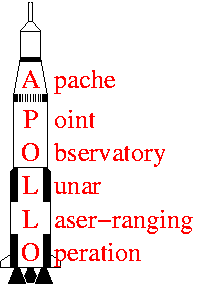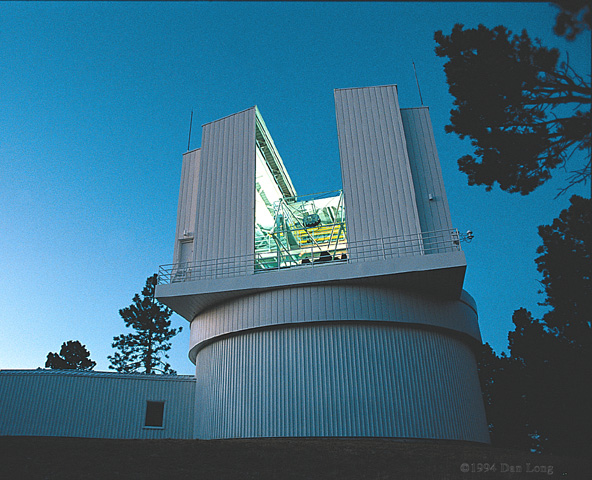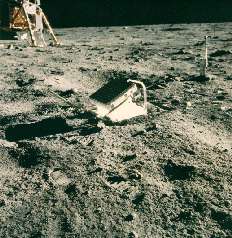APOLLO

APOLLO (the Apache Point Observatory Lunar Laser-ranging Operation) is a new initiative in lunar laser ranging (LLR), that will utilize the 3.5 meter telescope at Apache Point in southern New Mexico. The large aperture of the telescope in combination with the good atmospheric "seeing" at the site will launch us into the regime of recording multiple returned photons per pulse—in contrast to the 0.01 photon-per-pulse average experienced by current LLR facilities.
We will measure the round-trip travel time of laser pulses bounced off the lunar retroreflectors to a precision of a few picoseconds, corresponding to about one millimeter of precision in range to the moon. Using this information, we will be able to gauge the relative acceleration of the earth and moon toward the sun (like a modern-day Leaning Tower of Pisa experiment) in order to ascertain the free-fall properties of earth's gravitational self-energy.
Einstein's Equivalence Principle, upon which General Relativity rests, claims that all forms of mass-energy experience the same acceleration in response to an external gravitational force. This is to say that the inertial mass and gravitational mass are equivalent for any form of mass and/or energy. This is very difficult to verify for gravitational energy itself, because laboratory masses have no appreciable gravitational binding energy. One needs bodies as large as the earth to have any measurable self-energy content. Even then, the self-energy contribution to Earth's total mass-energy is less than one part-per-billion.
If the earth's gravitational self-energy does not precisely obey the Equivalence Principle, the orbits of the earth and moon around the sun would be slightly displaced from one another (think of this as a modification of Kepler's third law), which would show up as a signal in our lunar range data. Various string-motivated theories, quintessence, and other alternatives to General Relativity almost all predict a violation of the Equivalence Principle at some subtle level. Given the recent hints that there may be some new and mysterious modification to the laws of large-scale gravitational attraction (as indicated by supernovae and cosmic background anisotropies), it is important that we probe every available aspect of the basic nature of gravity.
LLR also provides the best test of the constancy of Newton's gravitational constant, G, currently limited to a variation of less than a part in 1012 per year. Relativistic geodetic precession is also best probed (currently) by LLR, now verified at the 0.35% level of precision. And the list goes on: LLR provides the best test of the motional influence on gravitational attraction (called gravitomagnetism) at the 0.1% level, and also sets the most stringent limits on deviations from the expected 1/r2 law of gravity.


Take a look at simulator screenshots for a representation of what we expect to see from APOLLO.
In addition, a number of graduate and undergraduate students have been involved with APOLLO: Jana Strasburg (now Dr. Jana!), Tristan Hromnik, Jonathan Driscoll, Jesse Angle, Evan Million, Daniel Miller, Laura Tom, Charlie Barnhart, Matias Duran-Matute, Matt Stiglianese, Justin Ryser, and Laura Bodine.
APOLLO has benefited from the professional expertise of: Larry Carey, Peter Doherty, Erik Swanson, Sterling Fisher, Tim van Wechel, Allan Myers, Mark Klaene, Russell Owen, and Jeff Morgan. We are also tremendously grateful to our collaborators (Bernard Kosicki, Brian Aull, and Bob Reich) at MIT Lincoln Labs for the very productive access they have provided to their detector technology.
Finally, we thank NASA for supporting APOLLO and enabling it to get "off the ground", and more recently, a joint effort by NASA and the National Science Foundation to fund APOLLO at a level that will allow project completion and production of the first science results.